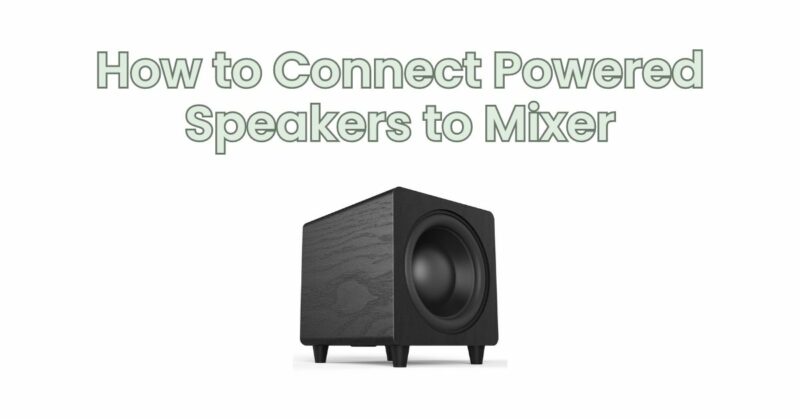Powered speakers offer convenience and excellent audio quality, making them a popular choice for various sound systems. If you’re looking to connect powered speakers to a mixer, you’re on the right track to achieve a versatile audio setup. Connecting powered speakers to a mixer allows you to control and optimize the sound output for different applications, such as live performances, events, or studio recording. In this article, we will guide you through the process of connecting powered speakers to a mixer, enabling you to harness the full potential of your audio system.
Step 1: Assess Compatibility and Ports Before starting, ensure that your powered speakers and mixer have compatible connection options. Powered speakers typically offer various input options, such as XLR, 1/4-inch TRS, or RCA. Check the user manuals or product specifications of your speakers and mixer to verify compatibility and available input/output ports.
Step 2: Determine Output Options on the Mixer Identify the output options on your mixer that are suitable for connecting to powered speakers. These outputs are typically labeled as “main out,” “master out,” or “line out.” Consult your mixer’s user manual or product specifications to locate the appropriate ports.
Step 3: Choose the Correct Cables Select the appropriate cables based on the output options on your mixer and the input options on your powered speakers. Common cable options include XLR, 1/4-inch TRS, or RCA cables. Ensure the cables are of sufficient length to reach from the mixer to the powered speakers.
Step 4: Connect the Cables Connect one end of the cable from the output ports on your mixer to the input ports on your powered speakers. Make sure to match the connectors correctly. For XLR connections, align the pins and twist to lock them in place. For TRS or RCA connections, insert the plugs firmly into the jacks.
Step 5: Power On and Test the Connection Power on your mixer and powered speakers. Adjust the volume levels on both devices to a moderate level.
Play audio through your mixer to test the connection and ensure that the sound is being output through the powered speakers. Adjust the volume levels on both the mixer and speakers to achieve a balanced sound.
Step 6: Fine-Tune the Sound Access the controls on your mixer to fine-tune the sound. Adjust the levels, equalization settings, and any other audio enhancements based on your preferences and the requirements of your audio setup.
Step 7: Additional Considerations Depending on your specific needs, you may want to explore additional features and settings on your mixer and powered speakers. This may include adjusting the input gain, setting up monitor mixes, or utilizing built-in DSP (Digital Signal Processing) for further sound optimization.
Conclusion: Connecting powered speakers to a mixer opens up a world of possibilities for audio control and optimization. By following the steps outlined in this article and ensuring compatibility between your powered speakers and mixer, you can integrate the speakers seamlessly into your audio setup. Enjoy the benefits of precise sound control, balanced audio output, and the flexibility to adapt to different applications or environments. Experiment with settings, fine-tune the sound balance, and explore the features of your mixer and powered speakers to achieve optimal audio performance. With the right connections and adjustments, your powered speakers connected to a mixer will deliver exceptional sound quality and ensure a satisfying audio experience in various settings, whether it’s a live performance, event, or recording session.

